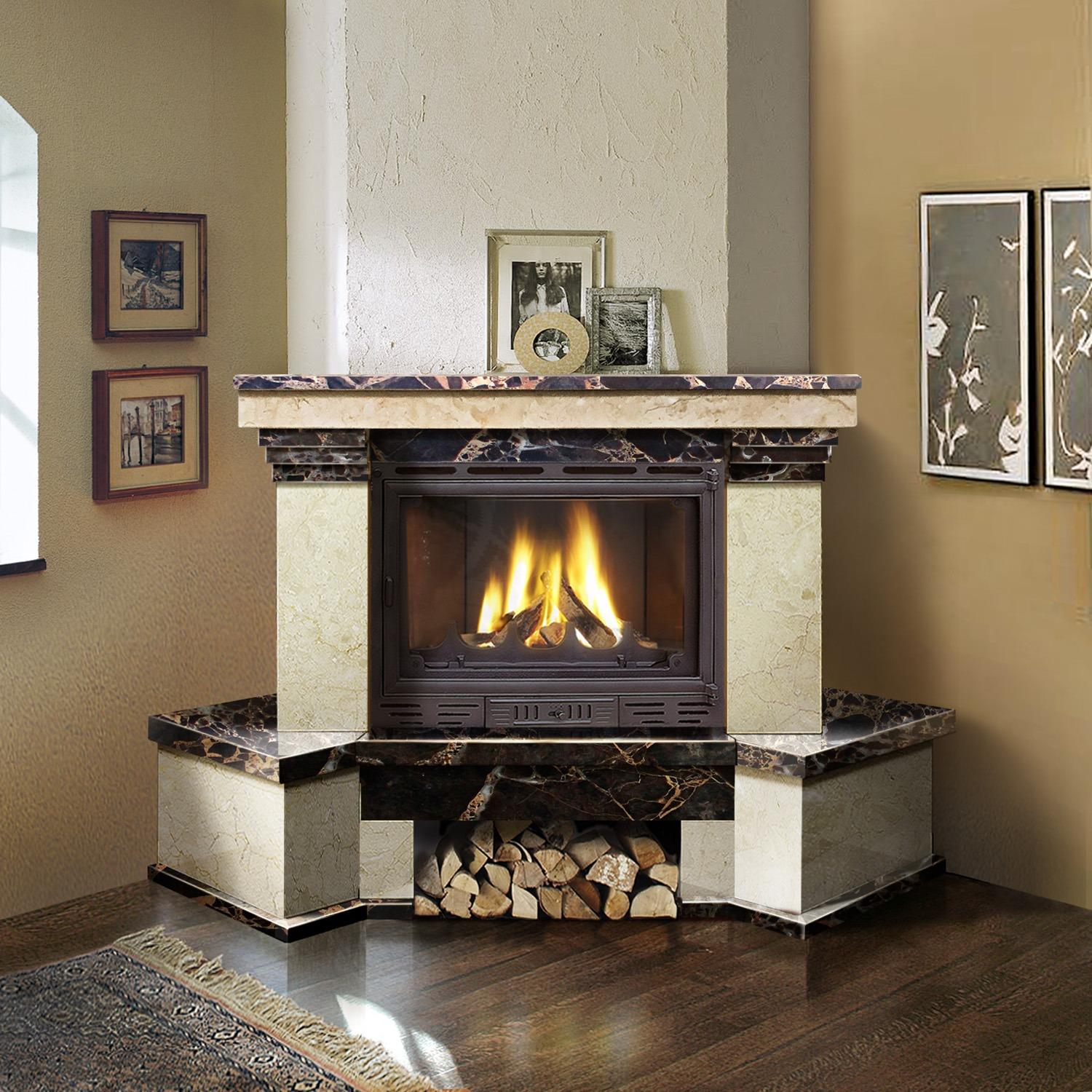
Fireplaces
– only 30 years ago the first insert/cassette fireplaces were created. They have been produced to guarantee complete control over the wood combustion process and maximum fuel utilization. They settled in Poland a few years ago. First, it was cast iron cartridges. Later, steel sheet inserts lined with fireclay appeared on the market. Cast irons are cheaper and more resistant to continuous high temperature operation. The disadvantages that arise already at the production stage include the inaccuracy of fitting individual elements. The disadvantage of cast iron cartridges during operation is the sensitivity to thermal shock and mechanical damage. Steel fireclay inserts are (statistically) very durable. Fireclay furnace lining is more resistant to high temperatures than cast iron, and accumulates heat better.
In the front wall of fireplace inserts and cassettes there are combustion air flow regulators that regulate the speed of burning wood, and hence the heating power of the device. Regulator knobs must be made of non-heating materials. Most devices are equipped with so-called cold handles that allow you to adjust them during use. All seals are made of a special heat-resistant compound, and fiberglass gaskets are not asbestos!
Closed (fired) fireplaces are becoming more popular as they can heat large surfaces at a relatively low cost. The combustion chamber is separated from the room by special glass. The fire in the fireplace heats the firebox, which, due to its design, transfers heat very efficiently to the air. It passes through a special air duct, additional gaps between the casing and the firebox, as well as through the grates in the fireplace hood. After heating, the air rises and exits through the grates in the fireplace casing or is transported through special channels of the hot air distribution system (DHW).
Which heating is better: gravity or forced?
The installation of fireplaces and DGP systems is best left to professionals. Proper assembly and tightness of the installation is extremely important. – Air in DGP systems can be transferred in two ways? gravitational and forced. Is the gravity system complicated? the heated air rises and then goes to the distribution ducts? explains Katarzyna Izdebska from Insteo.pl. This solution is reliable, since it does not require additional mechanical elements and is relatively cheap. However, it has one significant drawback: you can only heat rooms in the immediate vicinity of the fireplace.
Forced systems are used to heat large areas of the house, in which air is distributed through channels up to 10 m long - this system is more complex. It is based on the air supply, which sucks in hot air and forces it into all branches of the system. Should it have a power supply? unfortunately that makes it a bit more expensive to use? adds Katarzyna Izdebska. At the outlets of the supply air ducts, grilles with adjustable air flow are installed, thanks to which you can set the temperature in the house. A well-chosen system can heat a house up to 200 meters. In this case, it is important to place the fireplace in the center of the house. As a result, the distribution channels will be of the same length and the heat will be distributed evenly.
Fireplaces are becoming more and more popular in Poland, their operation is not expensive, and the stove itself is an elegant decorative element. There are many different designs of fireplaces on the market, thanks to which the house will acquire a unique character. In addition, the operation of this type of heating will save you money in your home budget.
.
